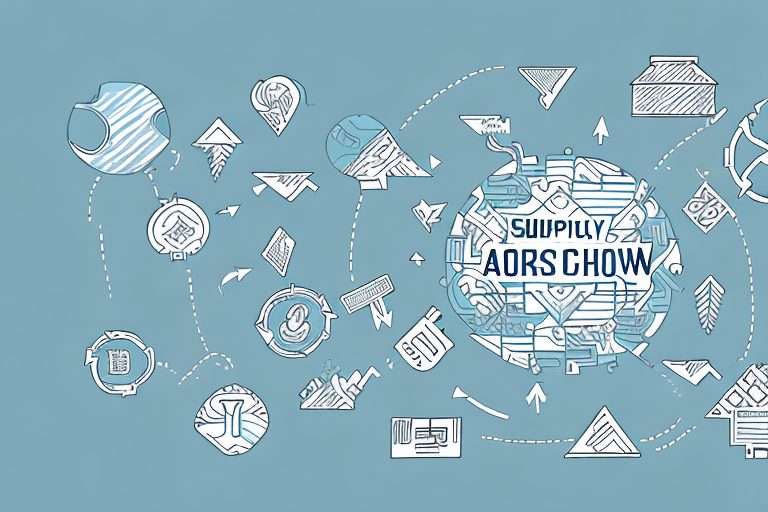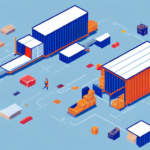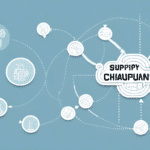Exploring the Benefits of Reverse Logistics
Reverse logistics is the process of managing the flow of products from their end destination back to their source to recover value or ensure proper disposal. This strategic approach can significantly impact a business by saving costs, reducing waste, and enhancing customer satisfaction. In this article, we delve into the concept of reverse logistics, its role in supply chain management, and the key benefits it offers.
Understanding Reverse Logistics
Reverse logistics involves handling returned products, obsolete items, or those that need recycling or proper disposal. Unlike traditional logistics, which focuses on moving products from origin to consumer, reverse logistics recaptures value from products that might otherwise become waste. This process is crucial for sustainability and can lead to substantial economic benefits.
Key Components of Reverse Logistics
- Product Returns Management: Handling customer returns efficiently to maximize value recovery.
- Refurbishment and Remanufacturing: Repairing or upgrading returned products to create new revenue streams.
- Recycling and Disposal: Ensuring environmentally responsible disposal of unusable products.
Challenges in Reverse Logistics
Managing reverse logistics can be complex, requiring coordination with multiple stakeholders, including customers, retailers, and logistics providers. Ensuring the proper inspection, sorting, and processing of returned products is essential to determine the most effective course of action.
The Role of Reverse Logistics in Supply Chain Management
Reverse logistics is integral to optimizing supply chain processes. By reclaiming value from returned products, businesses can reduce costs and enhance efficiency. Additionally, effective reverse logistics contributes to environmental sustainability by minimizing waste and promoting the recycling of materials.
Optimizing Inventory Management
Managing excess inventory through reverse logistics strategies like refurbishing, repurposing, or recycling can significantly reduce waste and improve financial performance. According to a 2023 supply chain report, businesses that implement reverse logistics can reduce inventory costs by up to 20%.
Enhancing Customer Satisfaction
Efficient reverse logistics processes, such as easy returns portals and clear return policies, boost customer satisfaction and loyalty. A study by ShipScience found that 85% of customers are more likely to return to a company with a hassle-free return process.
Benefits of Reverse Logistics
Cost Reduction
Reverse logistics helps businesses lower costs by recovering value from returned products, reselling them, or reusing their components. Additionally, consolidating return shipments can reduce transportation expenses. Proper disposal also avoids hefty fines associated with environmental regulation violations.
Environmental Impact
Implementing reverse logistics reduces the environmental footprint of a business by promoting recycling and minimizing waste. According to the Environmental Impact Report 2023, companies with reverse logistics systems reduce their carbon emissions by an average of 15%.
Improved Customer Satisfaction
Streamlined return processes enhance customer experience, leading to higher loyalty and repeat business. Efficient handling of returns ensures customers feel valued and supported, fostering long-term relationships.
Enhanced Brand Image
Commitment to sustainability through reverse logistics bolsters a company's reputation. Consumers are increasingly eco-conscious and prefer brands that prioritize environmental responsibility.
Implementing Reverse Logistics
Successful implementation of reverse logistics requires careful planning and the integration of technology. Businesses must assess their specific needs, invest in appropriate systems, and ensure compliance with environmental regulations.
Overcoming Challenges and Risks
Implementing reverse logistics poses challenges such as significant initial investments in technology and infrastructure. Additionally, ensuring compliance with environmental laws is crucial to avoid legal repercussions.
The Role of Technology
Advanced tracking systems and data analytics are vital for efficient reverse logistics. Technology facilitates the monitoring of returned products, optimizes processing, and provides insights into customer behavior and product quality.
Factors to Consider
- Cost of Implementation: Evaluate the financial investment required for reverse logistics systems.
- Potential Benefits: Assess the economic and environmental advantages.
- Resource Allocation: Ensure adequate resources are available for managing the reverse logistics process.
Future Trends and Opportunities in Reverse Logistics
The future of reverse logistics is bright, driven by the growing emphasis on sustainability and the rise of e-commerce. As businesses seek to minimize waste and enhance efficiency, reverse logistics will become even more critical in supply chain management.
Growth in the Healthcare Industry
With the increasing demand for medical devices and equipment, the healthcare sector presents significant opportunities for reverse logistics. Efficient management of returns and disposal of hazardous materials can reduce costs and improve sustainability.
Expansion in the Fashion Industry
The fashion industry is embracing reverse logistics to address the environmental impact of fast fashion. Recycling and repurposing clothing not only reduce waste but also meet consumer demand for sustainable practices.
Case Study: XYZ Company's Reverse Logistics Success
XYZ Company, a leading consumer electronics manufacturer, successfully implemented a reverse logistics system to manage product returns and disposal. By recovering value from returned items, XYZ reduced costs and improved operational efficiency. Proper disposal practices also minimized environmental impact, enhancing the company's reputation.
Technological Integration
XYZ utilized a comprehensive tracking system to monitor returned products, determining whether they should be resold, refurbished, or recycled. This technology provided valuable data on customer behavior and product quality, enabling XYZ to make informed decisions and reduce future returns.
Conclusion
Reverse logistics offers substantial benefits for businesses, including cost savings, environmental sustainability, improved customer satisfaction, and enhanced brand image. By effectively implementing reverse logistics processes, companies can optimize their supply chains, reduce waste, and achieve long-term success. As sustainability becomes increasingly important, the role of reverse logistics in supply chain management will continue to grow, presenting new opportunities for innovation and efficiency.




















